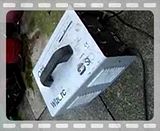if PVC cable is dying after only 25 years then either it was probablly either a bad batch to begin with or it was abused. PVC cable run within it's ratings should last a very long time.
also adding RCD protection does provide an extra layer of safety regardless of the state of the existing installation.
also adding RCD protection does provide an extra layer of safety regardless of the state of the existing installation.


